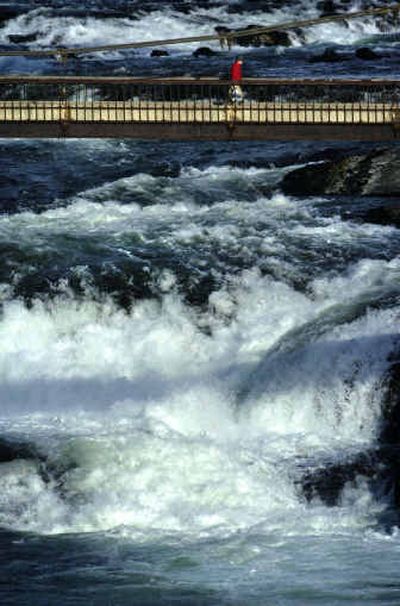Disputes plague plans for dams

Spilling a bit more water into the Spokane River to help trout is perfectly acceptable to Kristy Reed Johnson, who lives in a gated community along the river upstream from the Post Falls dam.
More water in the river, however, might make it difficult for Johnson and other riverside homeowners to use their docks.
“I don’t mind not being able to use my boat if it means saving the life of fish,” Johnson said. “Providing water for someone to kayak is real low on our list of priorities.”
Johnson’s concerns illustrate the difficulty faced by Avista Utilities in its attempt to design a management plan for the dams on the Spokane River system for the next 30 to 50 years. Even a minor flutter of the dam gates in Post Falls can affect boaters, homeowners, fish and wildlife from Lake Coeur d’Alene downstream to Lake Spokane.
After three years of meetings and negotiations, Avista had hoped to have reached some consensus over the management of the dams before the government-imposed deadline in July.
But major disputes remain, ranging from the timing of summer’s high-water season on Lake Coeur d’Alene to the amount of water that should be spilled over downtown Spokane waterfalls on summer weekends.
Government and tribal officials, as well as river and lake advocates, will step up talks in coming months to find consensus before the July deadline, said Bruce Howard, relicensing manager for Avista. “We’re not done yet,” he said.
Agreements in other federal dam licenses often don’t occur until after the application has been filed with the federal government, Howard said. If consensus is still not reached, “then litigation ensues,” Howard said. “We think it’d be sort of a waste. We’d rather spend the money protecting resources.”
One of the sticking points has been the amount of water flowing over the downtown waterfalls. Avista has proposed guaranteeing a minimum of 200 cubic feet of water per second over the north channel of the Upper Falls, which typically runs nearly dry during July and August.
The plan calls for a partial restoration of the channel to better funnel the water over the falls. The Sierra Club wants at least 500 cfs.
“We think it’s important there be water in the waterfalls,” said Rachael Paschal Osborn, of the Sierra Club, during a meeting Tuesday in Spokane. Osborn went on to call the falls “the most spectacular feature in downtown Spokane.”
Andrew Stenbeck, regional manager of the Washington Department of Natural Resources, accused the Sierra Club of “hijacking” the process with the group’s last-minute rejection of the proposal. Extensive surveys and discussions have shown a wide range of preferences for waterfall flows, Stenbeck said, with most people agreeing 200 to 400 cfs is ideal.
“It’s a subjective thing. It’s hard to quantify,” he said.
Stenbeck said his frustration with the Sierra Club comes from the prospect of a prolonged battle over river management.
None of Avista’s proposals – including improvements to fish habitat, local parks and even boat ramps – will begin until a new license is issued by the Federal Energy Regulatory Commission, in 2007 at the earliest.
Johnson, the Spokane River homeowner, said the squabble is rooted in the region’s deep love for a river system with limited water.
“Everybody’s trying to make this river fill their needs,” she said.